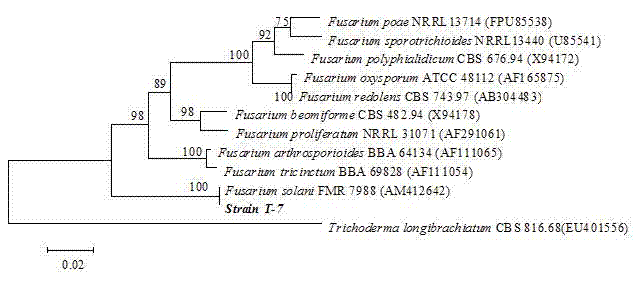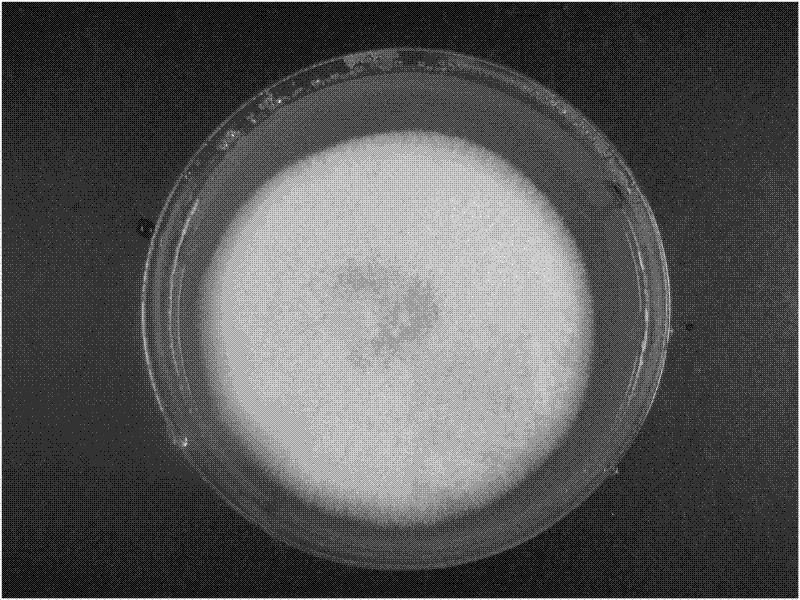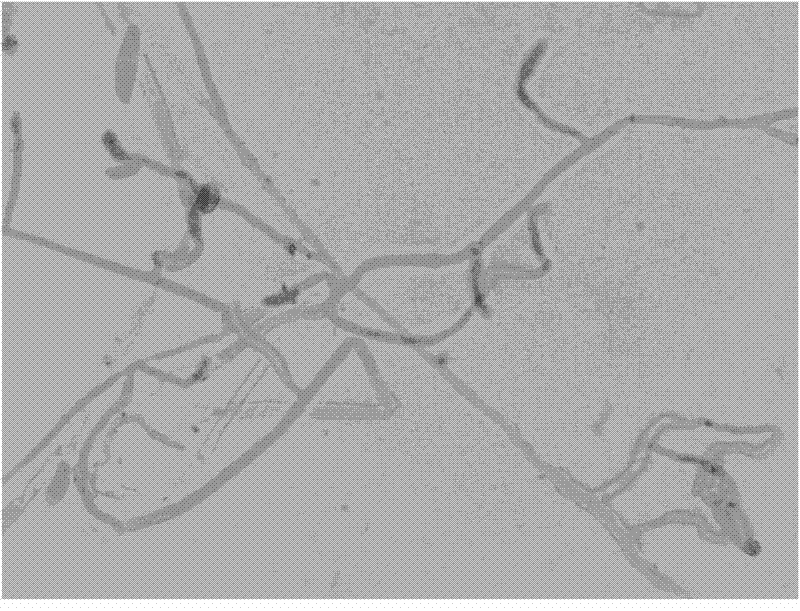Separation and purification method of endophytic fungi from ginkgo biloba
An endophytic fungus, separation and purification technology, applied in the field of microorganisms, can solve the problems of blind indiscriminate application of pesticides, long residual effect period, high toxicity and so on
- Summary
- Abstract
- Description
- Claims
- Application Information
AI Technical Summary
Problems solved by technology
Method used
Image
Examples
Embodiment 1
[0071] The specific operation steps of the separation and purification method of ginkgo endophytic fungus are as follows:
[0072] (1). Preparation of ginkgo tissue: collecting roots, stems and leaves of ginkgo;
[0073] (2). Surface disinfection and sterility detection of ginkgo tissue: the roots collected in step (1) are soaked in 70% alcohol for 1 min and 2 min in 0.2% sodium hypochlorite solution; Soak in 70% alcohol for 50s, soak in 0.2% sodium hypochlorite solution for 90s; the collected leaves are soaked in 70% alcohol for 40s, and soak in 0.2% sodium hypochlorite solution for 60s respectively; the soaked roots, Rinse the stems and leaves with sterile water for 3 times, and dry them in the shade to obtain sterilized roots, stems, and leaves; cut the sterilized roots, stems, and leaves into 0.5cm×0.5cm-sized root pieces and stems with a sterile scalpel block, leaf block; then a part of the root block, stem block, and leaf block are directly planted on the first potato d...
Embodiment 2
[0091] The specific operation steps of the separation and purification method of ginkgo endophytic fungus are as follows:
[0092] (1). Preparation of ginkgo tissue: collecting roots, stems and leaves of ginkgo;
[0093] (2). Surface disinfection and sterility detection of ginkgo tissue: the roots collected in step (1) are soaked in 70% alcohol for 1 min and 2 min in 0.2% sodium hypochlorite solution; Soak in 70% alcohol for 50s, soak in 0.2% sodium hypochlorite solution for 90s; the collected leaves are soaked in 70% alcohol for 40s, and soak in 0.2% sodium hypochlorite solution for 60s respectively; the soaked roots, Rinse the stems and leaves with sterile water for 3 times, and dry them in the shade to obtain sterilized roots, stems, and leaves; cut the sterilized roots, stems, and leaves into 0.5cm×0.5cm-sized root pieces and stems with a sterile scalpel block, leaf block; then a part of the root block, stem block, and leaf block are directly planted on the first potato d...
PUM
 Login to View More
Login to View More Abstract
Description
Claims
Application Information
 Login to View More
Login to View More - R&D
- Intellectual Property
- Life Sciences
- Materials
- Tech Scout
- Unparalleled Data Quality
- Higher Quality Content
- 60% Fewer Hallucinations
Browse by: Latest US Patents, China's latest patents, Technical Efficacy Thesaurus, Application Domain, Technology Topic, Popular Technical Reports.
© 2025 PatSnap. All rights reserved.Legal|Privacy policy|Modern Slavery Act Transparency Statement|Sitemap|About US| Contact US: help@patsnap.com



